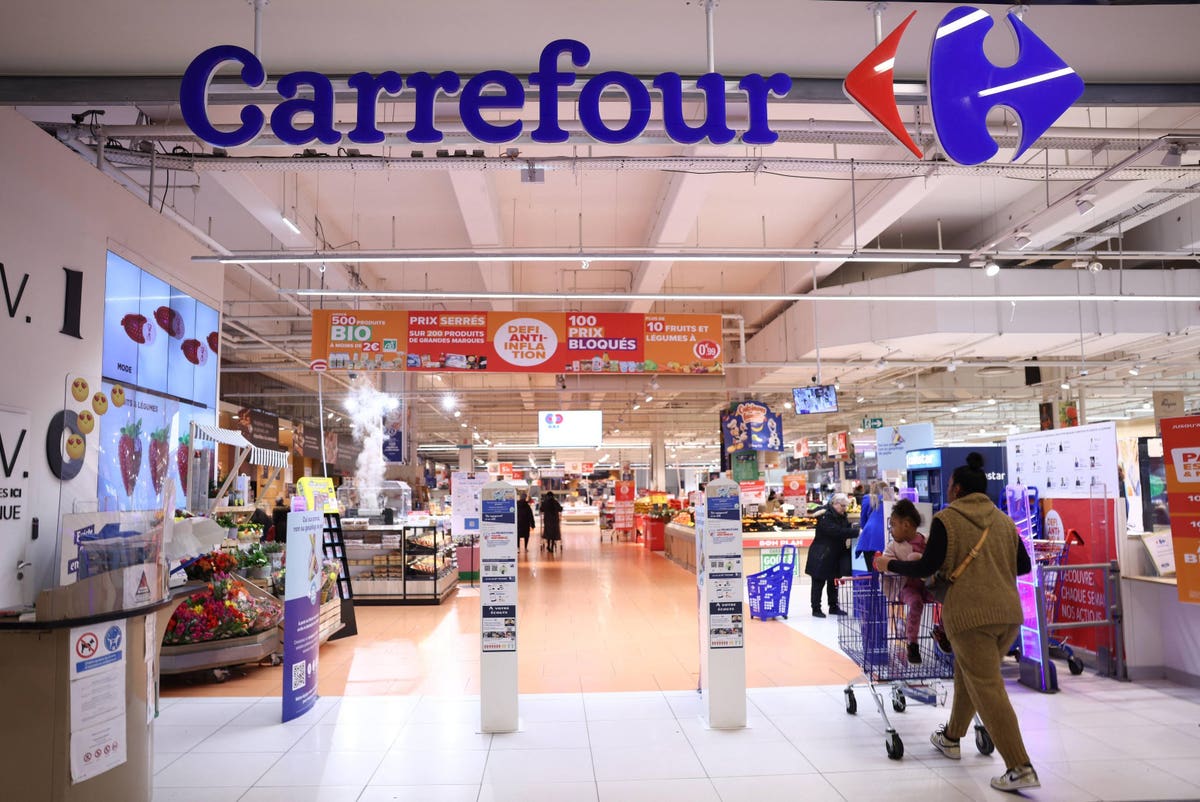Ever felt that things were getting, well, a little smaller? Just not what they used to be?
Nostalgia, or a more sinister and deliberate systemic downsizing of products in order to profiteer?
French supermarket Carrefour is certainly not impressed and on Monday this week it carried out its threat and put stickers on its shelves highlighting ‘shrinkflation’ to its customers across a number of key brands.
Shrinkflation is the term dubbed for making products smaller but maintaining – or even increasing – their price all the same.
It has become an inflationary phenomenon for consumers all around the world in recent times and Carrefour has determined that enough is enough, singling out Lindt chocolate, Lipton Ice Tea, and Viennetta ice cream for criticism.
So within its stores, shoppers are now being informed if bottles or pack sizes are smaller or lighter in a move Carrefour said it hopes will put pressure on FMCG brands to keep prices down.
Carrefour, which is France’s second largest grocery chain and one of the world’s biggest supermarket groups, is highlighting the products with 5-inch square, orange-backed shelf signs reading: “This product has seen its weight drop, and the price charged by our supplier increase” and adds: “We undertake to renegotiate this tariff”.
In its initial campaign, Carrefour has singled out 26 products that have shrunk, without a commensurate price reduction, offered by food giants including Nestle, PepsiCo
PEP
When Less Is Not More
Food price inflation in France in the year to August was running at 11.1%, slightly lower than July but a wallet burning rise nonetheless for hard-pressed consumers.
Among those Carrefour has identified are Nestle’s Guigoz infant milk formula, where the pack size has fallen from 900g (just under 2lbs) to 830g, a bottle of sugar-free Lipton Ice Tea, from PepsiCo, which has shrunk to 1.25 litres from 1.5 litres (0.33 gallon), representing a 40% increase in the price per litre, and Unilever’s Viennetta, which has downsized from 350g to 320g, an 8.5% reduction.
“Obviously, the aim in stigmatizing these products is to be able to tell manufacturers to rethink their pricing policy,” said Carrefour’s director of client communications, Stefen Bompais.
The move had been signalled in advance, with Carrefour chief executive Alexandre Bompard, who also heads retail industry lobby group FDC, repeatedly complaining that despite the cost of raw materials dropping, the FMCG giants were not reducing prices.
It is a common refrain, with many supermarket groups around the world feeling that they are receiving the consumer backlash for food inflation, while cutting their margins to absorb product price increases.
Rival French grocery group Intermarché also highlighted some products in-store over shrinkflation earlier this summer, telling shoppers that its “role is to offer you your favourite brands but also to alert you to these behaviours”.
In June, French Finance Minister Bruno Le Maire summoned 75 major retailers and consumer groups, urging them to cut prices. After a fresh round of meetings last month, Le Maire said Unilever, Nestlé and PepsiCo were among companies not “toeing the line” over prices.
FMCG Brands Respond
As for the producers, they have predominantly stayed tight lipped so far and have declined to comment.
A spokesperson for Lindt & Sprüngli told Reuters that its prices had gone up on average by about 9.3%, in line with rising raw material costs, while information about product size was always made clear.
“We have made a concerted effort to compensate for increased costs by increasing efficiency as much as possible. Therefore, we have only passed on the costs we could not absorb ourselves in the form of price increases to our customers,” they said.
For its part, Carrefour is attempting to get consumers on-side as retailers and brands prepare for new negotiations, hoping to agree that the prices of 5,000 products will stop rising or even drop.
In the meantime, if a product doesn’t pack quite the punch it used to, Carrefour is going to make sure shoppers know about it.
Read the full article here





